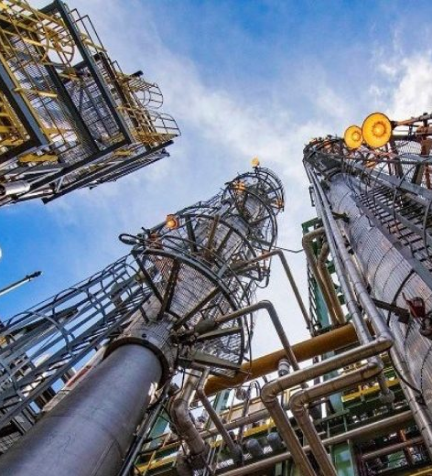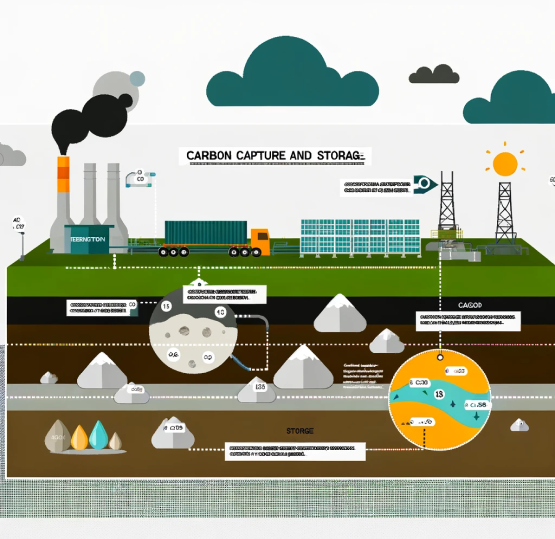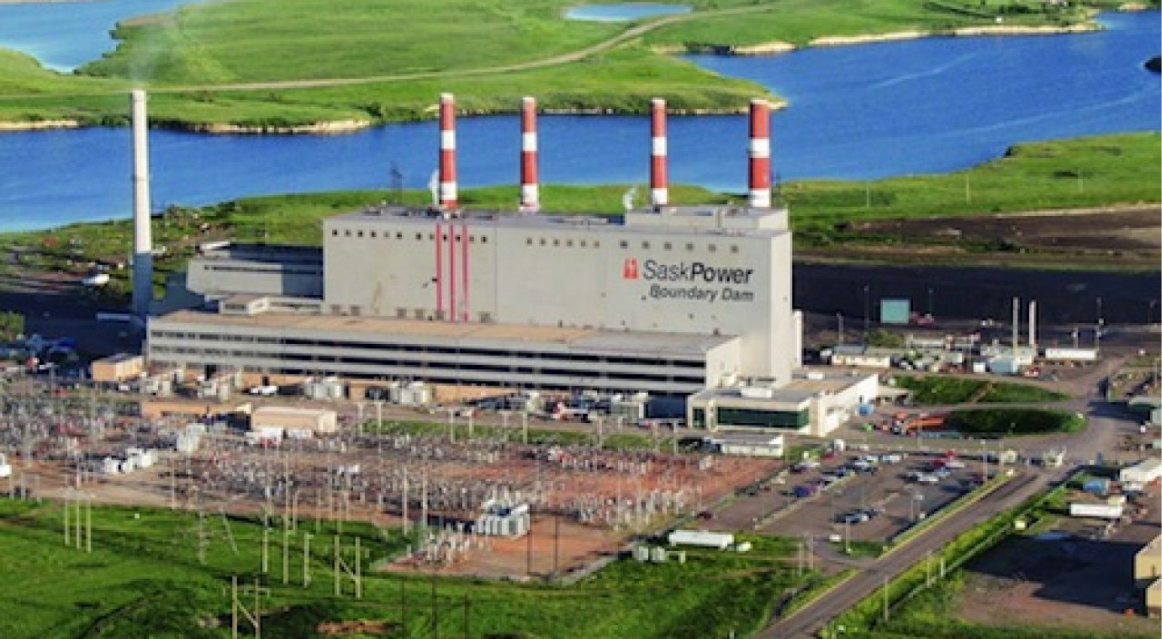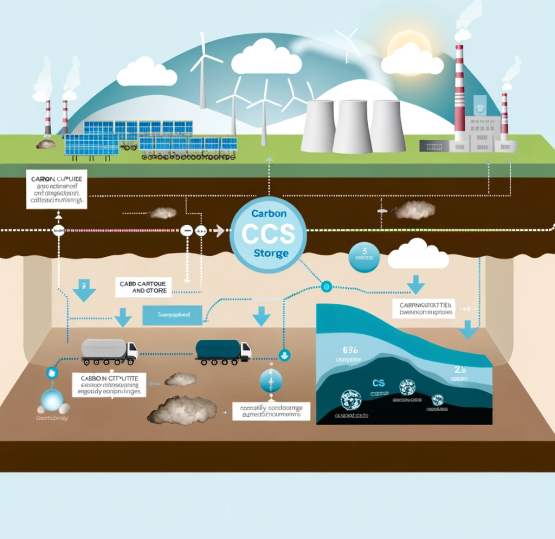Climate change poses an urgent threat to our planet, necessitating immediate and sustained action to mitigate its impacts. As global temperatures rise, the need for effective strategies to reduce greenhouse gas emissions becomes increasingly critical. Among the various technologies being explored, Carbon Capture and Storage (CCS) stands out as a key solution with the potential to significantly lower emissions from some of the largest contributors, including the oil industry.
CCS technology involves capturing carbon dioxide (CO2) emissions at their source, transporting them to a storage site, and securely storing them underground to prevent their release into the atmosphere. This process not only helps in reducing the carbon footprint of industrial activities but also plays a crucial role in the transition towards a more sustainable energy future.
Oil companies are uniquely positioned to pioneer the advancement of CCS technologies. With their expertise in geological exploration and drilling, they can leverage existing infrastructure and knowledge to implement CCS at a scale that can make a substantial difference. By investing in CCS, these companies can contribute to the global fight against climate change, while also preparing for a lower-carbon economy.
This blog will delve into the pressing need for climate change mitigation, the workings of CCS technology, and the pivotal role that oil companies play in advancing this crucial climate solution. Stay tuned as we explore how the oil industry is stepping up to the challenge and becoming part of the solution to one of the most pressing issues of our time.
Unveiling CCS – The Climate Change Combatant
Carbon Capture and Storage (CCS) is akin to giving Earth a set of super lungs. It’s a technology that captures carbon dioxide (CO2) emissions from sources like power plants and industrial facilities, which are major contributors to atmospheric CO2 levels. The captured CO2 is then transported and securely stored in geological formations deep underground.
Imagine CO2 as a runaway villain, and CCS as the hero that captures it. The process begins at the source, such as a power plant burning fossil fuels. Here, CO2 is isolated from other gases produced during combustion. This can be done using various methods, including post-combustion capture with solvents or pre-combustion techniques.
Once captured, the CO2 is compressed to a liquid-like state and transported, often via pipelines, to a suitable storage site. These sites are carefully selected to ensure that the CO2 stays put for thousands of years. Common storage locations include depleted oil and gas fields or deep saline aquifers.
As of the latest reports, the global storage capacity for CCS has increased by 32% in just one year. There are now 135 commercial CCS facilities in the project pipeline, with 27 fully operational. These facilities span various sectors, including cement, steel, hydrogen, and power generation.
In 2023, there were 41 commercial-scale CCS facilities in operation, 26 under construction, and 325 in various stages of development. This marked an increase in countries investing in CCS, with 11 new countries adding facilities to their development plans.
CCS is not just about storing carbon; it’s about reshaping our future. By reducing the amount of CO2 entering the atmosphere, CCS plays a crucial role in the global effort to mitigate climate change and meet the targets set by international agreements like the Paris Accord.
The Role of Oil Companies in Carbon Capture and Storage (CCS)

Case Studies of Leading Oil Companies in CCS
- Shell’s Quest Project in Canada
Location: Alberta, Canada
Capacity: Captures 1 million tonnes of CO₂ annually.
Outcome: Quest has stored over 5 million tonnes of CO₂ deep underground since 2015. - Chevron’s Gorgon Project in Australia
Location: Barrow Island, Australia
Capacity: Designed to capture up to 4 million tonnes of CO₂ per year.
Outcome: One of the world’s largest CCS projects, contributing significantly to Australia’s CO₂ reduction efforts.
Innovative CCS Projects by the Oil Industry
- BP’s Net Zero Teesside (NZT) Project
Aims to create the UK’s first decarbonized industrial cluster through CCS and hydrogen technologies. - ExxonMobil’s Expansion in Wyoming
Plans to capture more CO₂ with a new venture at the LaBarge, Wyoming facility, aiming to capture an additional 1 million tonnes per year.
CCS Integration into Sustainability Strategies
Oil companies are increasingly incorporating CCS into their broader sustainability and climate change mitigation strategies. For instance:
- Equinor is investing in the Northern Lights project, part of Europe’s first industrial-scale CCS value chain.
- Total is developing the DACCIWA project, which focuses on direct air capture (DAC) integrated with CCS.
Statistical Data and Recent Developments
- The Global CCS Institute reports that as of 2021, there are 26 commercial CCS facilities in operation, capturing approximately 40 million tonnes of CO₂ annually.
- The International Energy Agency (IEA) highlights that CCUS investments have consistently accounted for less than 0.5% of global investment in clean energy and efficiency technologies.

Technical and Economic Challenges
CCS technology faces several technical hurdles, such as the energy requirements for CO2 capture and the need for extensive infrastructure for transport and storage. Economically, the main challenge is the high initial investment and operational costs. CCS projects are capital-intensive, requiring significant outlay for CO2 transport pipelines and geological storage resources.
A lack of clear regulations in many jurisdictions creates compliance risks. Long-term liability for stored CO2 often rests with the operator, deterring investment. The development of familiar business models and structures to reduce perceived investment risk is still in its infancy for CCS.
CCS offers the oil industry a pathway to decarbonize operations and comply with emissions targets. It enables the production of low-carbon fuels like hydrogen and can be integrated with Enhanced Oil Recovery (EOR) to improve oil extraction efficiency while storing CO2.
CCS is crucial for achieving climate mitigation efforts. It can reduce emissions from hard-to-abate sectors and is essential for the transition to net-zero emissions. By 2070, CCS could account for nearly 15% of the cumulative reduction in emissions compared to current policies.
CCS is expected to play a pivotal role in meeting net-zero targets. It’s estimated that by 2050, we will need to remove up to 10 GtCO2 annually from the atmosphere, with CCS contributing significantly to this effort.
Global CCS Initiatives and Collaborations
Carbon Capture and Storage (CCS) is a critical technology in the fight against climate change. It involves capturing carbon dioxide (CO2) emissions from sources like power plants and industrial processes, transporting it to a storage site, and depositing it underground where it won’t enter the atmosphere. The Global CCS Institute is a leading entity that accelerates the deployment of CCS to tackle climate change and deliver climate neutrality.
International collaboration is pivotal for the advancement of CCS technology. It facilitates knowledge sharing, policy development, and the creation of financial mechanisms that enable the widespread adoption of CCS. For instance, the Clean Energy Ministerial and the Carbon Sequestration Leadership Forum are platforms where countries and organizations come together to promote CCS through joint research and shared experiences.

Successful CCS deployment often requires partnerships between various sectors. Oil companies, governments, and research institutions collaborate to develop and scale CCS solutions. An example is the Tomakomai CCS Demonstration Project in Japan, which showcases international cooperation between government entities and private companies to capture and store CO2 emissions from an oil refinery.
Successful Global CCS Projects
Several CCS projects have made significant strides in reducing CO2 emissions:
- Boundary Dam in Canada: The world’s first post-combustion coal-fired CCS project, capturing more than 1 million tonnes of CO2 annually.
- Sleipner Project in Norway: The first offshore CCS project, storing over 1 million tonnes of CO2 per year beneath the North Sea.
- Gorgon Project in Australia: One of the largest CCS projects, aiming to sequester 3-4 million tonnes of CO2 annually.
The Evolving Landscape of CCS in the Oil Industry
The oil industry stands at a pivotal crossroads, with CCS emerging as a transformative technology that can significantly reduce carbon emissions. As global climate commitments intensify, the industry is increasingly turning to CCS as a viable solution to meet environmental targets.
- Ongoing Research and Development
Recent advancements in CCS technology focus on enhancing efficiency and reducing costs. Innovative approaches, such as integrating CCUS (Carbon Capture, Utilization, and Storage), not only store CO2 but also utilize it for industrial processes, adding economic value. Research is also exploring the use of artificial intelligence and machine learning to optimize CCS operations.
- CCS: A Vision for Sustainable Energy
The implementation of CCS could transform the oil industry into a sustainability leader. By 2030, CCS is projected to capture up to 440 million tonnes of CO2 annually, significantly mitigating the industry’s carbon footprint. This aligns with the broader vision of achieving net-zero emissions, where the oil industry can play a crucial role in the transition to a low-carbon economy.

- Educational Insights
Understanding CCS is key to appreciating its role in sustainable energy. It involves capturing CO2 emissions at their source, transporting them to a storage site, and securely storing them underground or using them in various applications. This process not only curbs emissions but also paves the way for cleaner energy production.
- Real and Recent Statistical Data
The International Energy Agency noted that the history of CCS has been marked by underperformance, but with renewed interest and investment, the technology is poised for a breakthrough. For instance, the oil and gas industry’s role in CCS and CDR (Carbon Dioxide Removal) is crucial, with a potential increase in CO2 capture from 45 million tonnes in 2022 to 440 million tonnes by 2030.

As we stand at the crossroads of climate action, the significance of Carbon Capture and Storage (CCS) technology in the battle against climate change cannot be overstated. CCS is not merely a tool; it’s a bridge to a sustainable future, offering a viable solution to reduce the carbon footprint of our industrial activities.
The journey towards a carbon-neutral future is paved with challenges, but also with immense opportunities. It is imperative that we continue to invest in and innovate CCS technologies. The European Union’s Innovation Fund is a testament to this commitment, allocating €25 billion towards low-carbon technologies by 2030, including CCS. Such investments are crucial for the development of next-generation CCS solutions that are more efficient and cost-effective.
The success of CCS hinges on collaboration. Public-private partnerships, international alliances, and joint ventures between oil companies, governments, and research institutions are the keystones of progress in CCS deployment. The World Economic Forum underscores the rapid growth of the CCS market, with an expected compound annual growth rate of 6.2% from 2023 to 2030, highlighting the global community’s drive towards decarbonization.
Support for CCS and climate change mitigation is a global imperative. International cooperation, as facilitated by organizations like the Intergovernmental Panel on Climate Change (IPCC) and the International Energy Agency (IEA), plays a crucial role in the widespread adoption and success of CCS. These efforts are essential to meet the Paris Agreement’s goals and limit global temperature rise.
Knowledge is power, and staying informed about CCS and climate change mitigation strategies is vital. We encourage readers to engage with the subject, support policies that promote CCS, and advocate for sustainable practices. Your voice matters in shaping a cleaner, greener world.


I just could not depart your web site prior to suggesting that I really loved the usual info an individual supply in your visitors Is gonna be back regularly to check up on new posts.